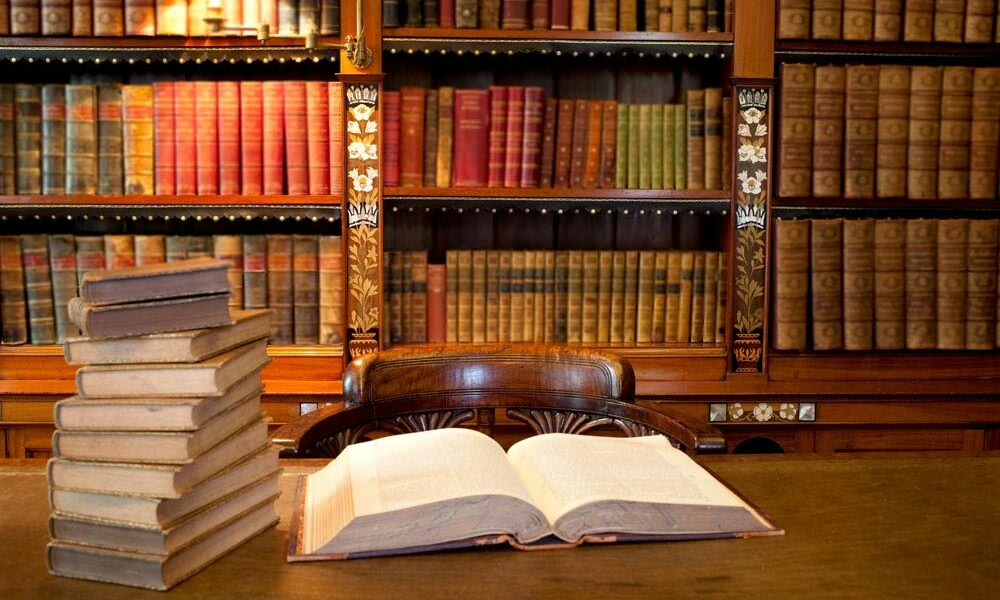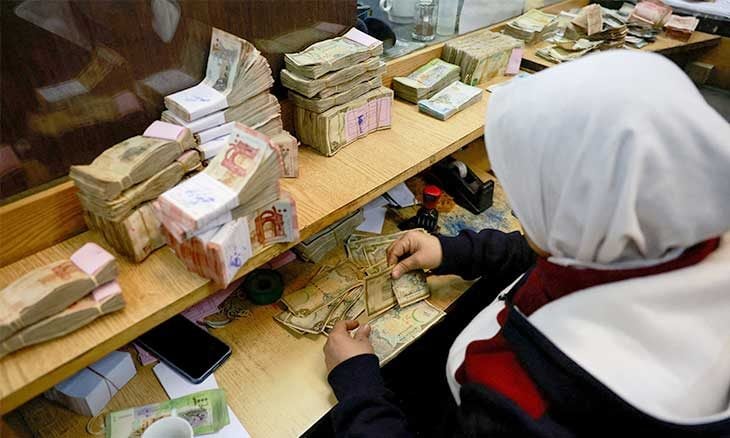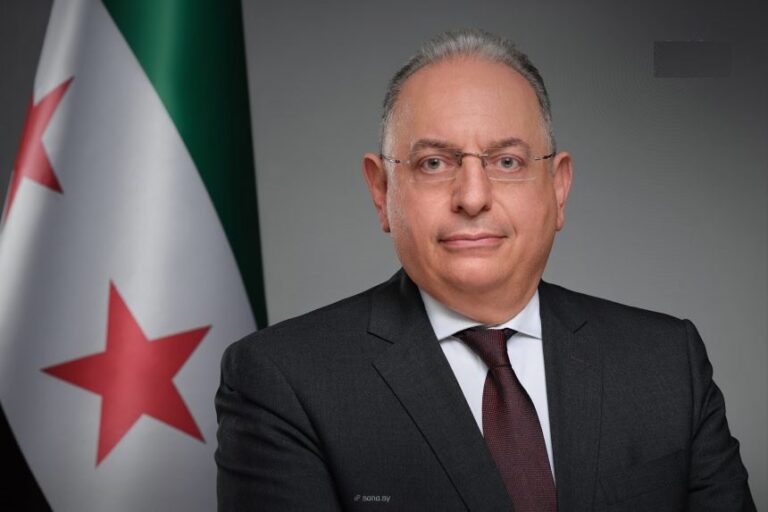Introduction:
Since May 2022, Turkish President Recep Tayyip Erdoğan has threatened a military incursion into northeastern Syria targeting the cities of Tell Rifaat and Manbij in Aleppo province. These cities, west of the Euphrates River, are under the control of the Syrian Democratic Forces (SDF). This indicates a potential change in the military control map, which has been the longest period of calm since the beginning of the military conflict in Syria in 2012. Since the end of February 2020, the military control map in Syria has remained unchanged in terms of control and contact lines between local forces on the ground, with all parties maintaining stable control percentages. This is due to the ceasefire agreements signed between Turkey and Russia on October 23, 2019, and March 5, 2020. The areas of control have remained stable between opposition factions and the SDF, as well as between opposition factions and Syrian regime forces.
General Atmosphere in Northeastern Syria:
Turkey aims to integrate the areas where it previously conducted operations within Syria. Diplomatic efforts have been underway since 2019 to resolve tensions in northeastern Syria. The United States has conducted several rounds of talks to ease tensions between stakeholders in the region, focusing on Kurdish-Arab discussions and internal Kurdish discussions, with the ultimate goal of facilitating engagement in talks between Turkey and the SDF.
Despite some aspects of Syrian policy remaining contentious between Washington and Ankara, the two NATO allies are united in their rejection of Bashar al-Assad’s current destabilizing role and their desire to maintain the current ceasefire in Idlib province. Regarding relations with the SDF, future negotiations need to be more comprehensively coordinated with Turkey, both secretly and publicly, to address a series of thorny issues, including separating the SDF from the Kurdistan Workers’ Party (PKK) and establishing a more inclusive governance structure in northeastern Syria that respects ethnic and religious diversity.
Hostile Relationship:
The relationship between the SDF and Turkey is complex and contradictory, revealed through several key aspects:
- Tensions and Military Escalation: The SDF is a multinational force formed with U.S. support, comprising Kurdish and Arab fighters but dominated by PKK-affiliated Kurds who consider Abdullah Öcalan, accused of terrorism and imprisoned in Turkey, as a theoretical and leadership reference. This composition may harm Turkish-American relations.
- Turkey’s Perception of the SDF: Turkey views the SDF as an extension of the PKK, not just its supporters, and sees it as a threat to its national security. The SDF also represents the primary force combating ISIS in northeastern Syria, competing with Turkey’s role.
- Potential Cooperation with the Syrian Regime: Despite the failure of a recent visit by the Autonomous Administration’s envoy to Damascus, which resulted in her arrest and subsequent release by Russian intervention, the SDF leader has expressed willingness to cooperate with Syrian government forces against Turkey. SDF Commander General Mazloum Abdi sees the primary goal of the Syrian army as defending Syrian territories from Turkish attacks.
- Future Challenges: Turkey continues to threaten new military incursions into Syria, increasing regional tensions. Overall, the relationship between the SDF and Turkey is influenced by regional political and security challenges and must be managed with caution and wisdom.
On the Possibility of Resolving Tensions:
Initially, there must be Turkish conviction in the possibility of resolving tensions with the SDF diplomatically and politically. This Turkish conviction is currently difficult, if not impossible, to mediate with Ankara. Therefore, any discussion about general solutions is unproductive and unrealistic due to Turkey’s rigid stance on accepting the SDF. This was evident in its rejection of the SDF’s call for local elections in the East Euphrates region and its refusal to accept the social contract previously approved by the SDF.
From the SDF’s side, there is a need to question the seriousness of its call for dialogue with Ankara, as voiced by the co-chair of the Syrian Democratic Council (SDC), Mahmoud Moslem, and the tools it has to persuade Turkey to change its views.
Secondly, negotiations between the involved parties must address several crucial points in an attempt to resolve the tensions in northeastern Syria:
- Borders and Security: Discussions should focus on sensitive areas, securing the border between Turkey and Syria, and addressing Turkish concerns about the impact of SDF control on PKK strength.
- Local Governance: Explore how to organize it in disputed areas to ensure the administrative system is inclusive and respects the rights of all minorities, which has not been achieved in the recent postponed municipal elections rejected by the United States, the SDF’s ally.
- Economic Interests: Particularly local economy, trade, and natural resources.
- Security and Counterterrorism: Ensuring the region is free from security threats affecting Turkey, Syria, or the region and the world.
- Human Rights and Civil Society: Enhancing civic and community participation in shaping the future.
These points form the basis for negotiations leading to a resolution of the tension between Turkey and the SDF.
SDF and the Syrian National Army:
Regarding the SDF and the Syrian National Army (SNA), both components of the armed Syrian opposition to Bashar al-Assad’s regime, they follow different orientations. The SDF is a multinational force, at least in appearance, formed with U.S. support and still under its patronage, comprising Kurdish and Arab fighters. It adopts a secular and democratic ideology and seeks to establish a federal system or administrative decentralization in northern Syria. It also works to combat ISIS and stabilize the region.
The SNA, on the other hand, is the structure of the armed Syrian opposition, mainly consisting of Syrian Arab and Turkmen rebels operating in northern Syria. The SNA aims to assist Turkey in establishing a “safe zone” in Syria and to form a national army in the areas captured through Operation Euphrates Shield, Olive Branch, and Peace Spring. The SNA also combats the SDF and ISIS equally.
Despite differing ideologies, the SNA and the SDF share goals of combating terrorism, maintaining stability in Syria, and opposing Bashar al-Assad’s regime, albeit in different ways. They sometimes clash but also work together in some cases to face common threats. Their interests overlap in areas of influence, with trade exchange through crossings connecting their regions, and they agree on rejecting Assad’s current authority to a minimum extent.
Overall, the relationship between the SDF and the SNA is complex, influenced by field and political conditions in Syria and the region.
Finally:
The Turkish rhetoric against SDF-controlled areas is escalating, with the latest shift in military policy from limited to continuous, hinting at a hot summer for the SDF. The SDF’s relationship with the Americans has not protected its vital centers or prevented assassinations of key leaders, and it will not do so in the future. Therefore, the SDF faces three options:
- Maintain the current situation and wait for a change in the broader Syrian picture, especially with the emergence of a new Saudi role.
- Surrender to Syrian regime forces and hand over the area controlled by the SDF, accepting integration into Syrian regime institutions as individuals, thereby transitioning the SDF into a political party.
- Turn the tables by integrating with the Syrian National Army and transforming hostility with Turkey into a strong friendship, severing all secret and public ties with the PKK, and working to bridge the gap and reconcile differences.
Each scenario has its pros and cons. The Syrian Future Movement, with its moderate and nationally accepted role among all parties, could play a mediating and positive role if the SDF chooses an option that the Syrian Future Movement can effectively support
References:
(1) The “Syrian Democratic Forces” are once again stuck between Turkey and ISIS…. https://www.washingtoninstitute.org/ar/policy-analysis/qwat-swrya-aldymqratyt-alqt-mn-jdyd-byn- trkya-wtnzym-aldwlt-alaslamyt.
(2) With the Syrian-Turkish rapprochement… where is the relationship between Damascus and the Kurds? https://almashhad.com/article/773112298002792-News/240310170528857-%D9%81%D9%8A-%D8%B8%D9%84-%D8%AA%D9%82%D8%A7%D8%B1 %D8%A8-%D8%A8%D9%8A%D9%86-%D8%AF%D9%85%D8%B4%D9%82-%D9%88%D8%A3%D9%86%D9% 82%D8%B1%D8%A9-%D8%A3%D9%8A%D9%86-%D9%87%D9%8A-%D8%B9%D9%84%D8%A7%D9%82%D8 %A9-%D8%B3%D9%88%D8%B1%D9%8A%D8%A7-%D9%88%D8%A7%D9%84%D8%A5%D8%AF%D8%A7%D8 %B1%D8%A9-%D8%A7%D9%84%D8%B0%D8%A7%D8%AA%D9%8A%D8%A9/.
(3) The Syrian Democratic Forces are “open” to working with the Syrian government forces…. https://arabic.euronews.com/2022/06/05/syrian-democratic-forces-is-open-to-coordinating-with -syrian-government-to-stop-turkey.
(4) What is the reason for the armed confrontations in areas of Turkish influence in northern Syria? https://arabic.euronews.com/2022/10/18/syria-explainer-armed-confrontations-in-areas-under-turkish-control.
(5) The Turkish incursion into northern Syria: motives and objectives – BBC News Arabic. https://www.bbc.com/arabic/middleeast-49971587.
(6) The Syrian regime is strengthening its forces in the SDF areas. What is the reason? | Independent Arabic. https://www.independentarabia.com/node/352346/%D8%A7%D9%84%D8%A3%D8%AE%D8%A8%D8%A7%D8%B1/%D8%A7%D9% 84%D8%B9%D8%A7%D9%84%D9%85-%D8%A7%D9%84%D8%B9%D8%B1%D8%A8%D9%8A/%D8%A7%D9% 84%D9%86%D8%B8%D8%A7%D9%85-%D8%A7%D9%84%D8%B3%D9%88%D8%B1%D9%8A-%D9%8A%D8% B9%D8%B2%D8%B2-%D9%82%D9%88%D8%A7%D8%AA%D9%87-%D8%A8%D9%85%D9%86%D8%A7%D8% B7%D9%82-%D9%82%D8%B3%D8%AF-%D9%81%D9%85%D8%A7-%D8%A7%D9%84%D8%B3%D8%A8%D8 %A8%D8%9F.
(7) It creates major problems. The National Army rejects the “Social Contract” issued by the SDF. https://www.syria.tv/%D9%8A%D8%A4%D8%B3%D8%B3-%D9%84%D8%A5%D8%B4%D9%83%D8%A7%D9% 84%D9%8A%D8%A7%D8%AA-%D9%83%D8%A8%D9%8A%D8%B1%D8%A9-%D8%A7%D9%84%D8%AC%D9% 8A%D8%B4-%D8%A7%D9%84%D9%88%D8%B7%D9%86%D9%8A-%D9%8A%D8%B1%D9%81%D8%B6-%D8 %A7%D9%84%D8%B9%D9%82%D8%AF-%D8%A7%D9%84%D8%A7%D8%AC%D8%AA%D9%85%D8%A7%D8% B9%D9%8A-%D8%A7%D9%84%D8%B5%D8%A7%D8%AF%D8%B1-%D8%B9%D9%86-%D9%82%D8%B3%D8 %AF.
8) The Syrian armed opposition: delineating the map of its forces and political weight. https://studies.aljazeera.net/ar/article/5530.
(10) en.wikipedia.org. https://ar.wikipedia.org/wiki/%D8%A7%D9%84%D8%AC%D9%8A%D8%B4_%D8%A7%D9%84%D9%88%D8%B7%D9 %86%D9%8A_%D8%A7%D9%84%D8%B3%D9%88%D8%B1%D9%8A.
(9) Integrate talks on northeastern Syria with a country-wide approach. https://www.washingtoninstitute.org/ar/policy-analysis/dmj-almhadthat-hwl-shmal-shrq-swrya-m-nhj-yshml-jmy-anha-alblad.
(10) American diplomacy in the Syrian field to reach a political solution. https://www.independentarabia.com/node/391426/%D8%B3%D9%8A%D8%A7%D8%B3%D8%A9/%D8%AA%D9%82%D8%A7%D8% B1%D9%8A%D8%B1/%D8%AF%D8%A8%D9%84%D9%88%D9%85%D8%A7%D8%B3%D9%8A%D8%A9-%D8% A3%D9%85%D9%8A%D8%B1%D9%83%D9%8A%D8%A9-%D9%81%D9%8A-%D8%A7%D9%84%D9%85%D9% 8A%D8%AF%D8%A7%D9%86-%D8%A7%D9%84%D8%B3%D9%88%D8%B1%D9%8A-%D9%84%D9%84%D8% AA%D9%88%D8%B5%D9%84-%D8%A5%D9%84%D9%89-%D8%AD%D9%84-%D8%B3%D9%8A%D8%A7%D8 %B3%D9%8A.
(11) After an 11-year break, Saudi Arabia resumes the work of its diplomatic mission in Syria. https://www.france24.com/ar/%D8%A7%D9%84%D8%B4%D8%B1%D9%82-%D8%A7%D9%84%D8%A3%D9%88% D8%B3%D8%B7/20230509-%D8%A7%D9%84%D8%B3%D8%B9%D9%88%D8%AF%D9%8A%D8%A9-%D8%AA%D8% B3%D8%AA%D8%A3%D9%86%D9%81-%D8%B9%D9%85%D9%84-%D8%A8%D8%B9%D8%AB%D8%AA%D9% 87%D8%A7-%D8%A7%D9%84%D8%AF%D8%A8%D9%84%D9%88%D9%85%D8%A7%D8%B3%D9%8A%D8%A9 -%D9%81%D9%8A-%D8%B3%D9%88%D8%B1%D9%8A%D8%A7-%D8%A8%D8%B9%D8%AF-%D9%82%D8 %B7%D9%8A%D8%B9%D8%A9-%D8%AF%D8%A7%D9%85%D8%AA-11-%D8%B9%D8%A7%D9%85%D8%A7 .
(12) Syria: Mass death, torture, and other violations against detainees following the defeat of ISIS…. https://www.amnesty.org/ar/latest/news/2024/04/syria-mass-death-torture-and- other-violations-against-people-detained-in-aftermath-of-islamic-state-defeat-new-report/.
(13) Northeastern Syria: Turkish strikes exacerbate the humanitarian crisis. https://www.hrw.org/ar/news/2022/12/07/northeast-syria-turkish-strikes-exacerbate-humanitarian-crisis.
(14) Map of control and influence in Syria in 2023 (jusoor.co)
(15) SDC presidency to Rudaw: We are ready for dialogue with Türkiye from…| Rudaw.net (rudawarabia.net)
(16) Common interests do not prevent escalation between the “National Army” and the “SDF” (alaraby.co.uk)
Jomaa Mohammed Laheeb
Research and Studies Department
Political Office
Syrian Future Movement


